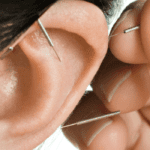Chiropractic treatment focuses on proper body alignment through manual manipulation to improve blood circulation. The primary goal is to activate the body’s ability to heal itself through treatments as an alternative to taking medications and surgery.
Whether it’s for chronic back pain, persistent headaches, a limited range of motion, or joint and muscle pain, knowing when to see a chiropractor is a great step towards achieving improved body health. To prepare yourself, you need to know what to expect on your first visit: what happens before, during, and after the chiropractic therapy session.
Initial Visit
During the initial visit, the chiropractor will evaluate your history and pain symptoms. Answer the following questions, which are likely to be asked, to come up with a proper evaluation and treatment plan:
- When did the pain start?
- How did the pain start? Was it after an injury?
- Where do you feel the pain?
- Is the pain dull, sharp, or throbbing? How does it feel?
- How long does it last? Does it come and go, or is it persistent?
- What activities do you do that intensifies the pain, if any?
Aside from these, pre-existing medical conditions and family history are also vital to know before being prescribed chiropractic treatment. Make sure you disclose all pertinent information to be given an effective treatment plan.
After the interview, you will be subjected to general tests, like blood pressure, reflexes, pulse, respiration, muscle tone, range of motion, muscle strength, and neurological integrity. Depending on the assessment of the chiropractor, further tests may be done. You might be asked to do an x-ray or MRI scan, though it is not always required.
Once diagnosed, the chiropractor will explain the individualized treatment plan and the duration of chiropractic care needed.
Before the Treatment
Prepare your body for the best results following the pending spinal adjustments:
- Drink enough water. Hydration allows your muscles to support the changes.
- Have a light meal that’s preferably high in protein.
- Walking a short distance helps loosen the spine.
- If you feel any pain, disclose it to your chiropractor before the treatment.
- Relax.
During the Treatment
A good chiropractor knows over 150 effective and mostly gentle techniques. Though you may be positioned in different ways, you will likely be facing down. You may hear popping and cracking sounds while your spine is being realigned. A small device may also be used to aid in gentle manipulation.
After the Treatment
Right after the adjustment, you may feel immediate relief as your range of motion improves. Some tenderness is normal. Your body is starting to move into its correct position, your circulation is being restored, and your muscles are starting to relax.
However, while you will feel much better, post-chiropractic care is still essential.
1. Hydrate
As with your usual massage, your body releases toxins after your bones and muscles are moved. To flush these out, drink plenty of water right after the adjustment. Water cushions the joints and carries the important nutrients needed by the body. Drinking more than usual for several days will keep your body functioning properly, and keeping yourself hydrated strengthens the muscles and prevents headaches and fatigue.
2. Move (and Exercise)
Avoid sitting for a long time. Instead, take a long walk, or ride a bike. This helps hold the adjustments made and prevents them from reverting. Being active helps speed up the healing process and even boosts after-adjustment effects.
While you are recommended to move, do this carefully. Never overdo it. Do not lift heavy objects, or engage in strenuous activities. Though exercising your range of motion helps to hold the adjustments, your body also needs to learn how to stay in its proper place.
Low-impact exercises, such as yoga, swimming, and Pilates, can improve recovery speed. If your reason for getting chiropractic therapy is because of an injury, your chiropractor will help you with specific exercises to heal the area.
3. Rest
Get enough sleep. Rest helps the body heal and gives your body time to recuperate. A soft mattress and thick pillows can result in a bad night’s sleep, while a firm mattress and appropriate pillows keep your neck and spine straight and well-aligned.
When To Stop Chiropractic Treatment
A re-evaluation of your chiropractic treatment plan is essential every few weeks to determine whether to continue the plan, change it, stop it, or refer you to another approach.
Generally, chiropractic treatments are discontinued when:
- There are no more symptoms experienced.
- There is increased pain. Though mild discomfort one to two days after the treatment is expected, any further suffering beyond this calls for a re-evaluation of the treatment plan. If you experience pain several days after, you need to inform your chiropractor.
- There is no improvement after two to four weeks.
With chiropractic treatment, there is no need to bear body pain any longer. If you are looking for an expert, give us a call at Advanced Chiropractors Group. We take pride in having partnered with the best healthcare professionals in hands-on treatment for alleviating body pain. Visit our website, or call us, and we will connect you to the best chiropractors in your area.








